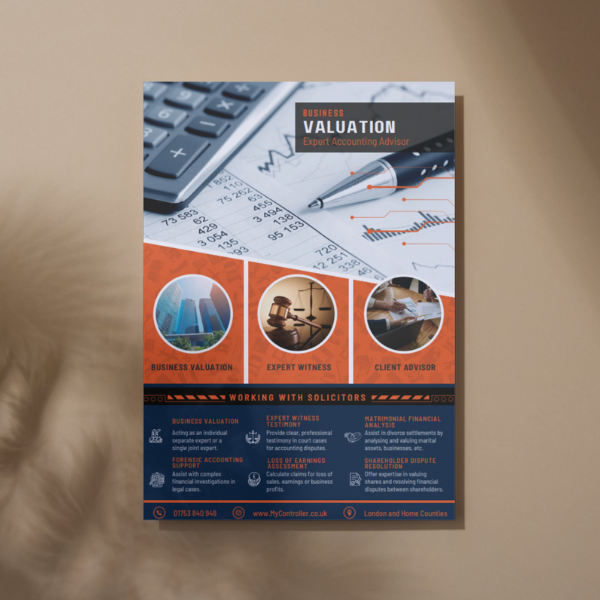The 3-Year Plan: Strengthening Business Fundamentals Before Exit
The 3-Year Plan: Strengthening Business Fundamentals Before Exit

Not every business has the luxury of planning five years ahead—sometimes, opportunities arise unexpectedly, or business owners decide to sell sooner than anticipated. If your company is three years away from a potential exit, the focus shifts from long-term transformation to targeted optimization—ensuring profitability, scalability, and operational efficiency before transitioning.
At MyController, we help businesses navigate this intermediate phase with a structured exit framework, refining financials, optimizing processes, and preparing leadership for investor due diligence. By taking three years to systematically improve business fundamentals, owners can still maximize their valuation and secure a strong negotiation position before exiting.
Why Three Years Is Still Enough Time to Make a Big Impact
Exiting a business with only 12 months to prepare is a high-intensity sprint, requiring drastic changes in a short period. However, three years provides enough time to:
- Strengthen profitability & optimize revenue streams, creating a more attractive business for buyers.
- Improve operational scalability, reducing inefficiencies and ensuring a seamless transition.
- Refine financial health, eliminating unnecessary costs and optimizing cash flow.
- Prepare for due diligence, ensuring financial reports and contracts are aligned for potential buyers.
- Track valuation improvements, ensuring owners measure progress before negotiations.
A well-structured three-year plan can significantly improve a business’s sale price, especially when paired with progressive financial tracking and operational fixes.
How to Optimize Your Business in Three Years
At this stage, businesses need a focused improvement strategy, tackling key areas with precision and urgency. This plan follows three structured phases, ensuring step-by-step enhancements.
Phase 1: Financial Stability & Revenue Optimization (Year 1)
Before making operational improvements, businesses must strengthen profitability, cash flow, and financial transparency.
- Optimise Profit Margins – Improve pricing strategies, cut unnecessary costs, and ensure stable revenue streams.
- Clean Up the Balance Sheet – Address debt, consolidate liabilities, and eliminate underperforming assets.
- Enhance Recurring Revenue Models – Strengthen predictable income sources to improve valuation.
- First Valuation Assessment (End of Year 1) – Establish financial benchmarks to measure improvement.
Phase 2: Operational Scalability & Business Independence (Year 2)
Once financial stability is established, businesses shift toward efficiency, scalability, and exit positioning.
- Streamline Business Operations – Improve workflow automation and reduce dependencies on key individuals.
- Strengthen Leadership Team – Develop management structures that ensure business continuity post-sale.
- Prepare for Due Diligence – Organize contracts, agreements, and financial documentation for potential buyers.
- Second Valuation Review (End of Year 2) – Measure growth in financial performance and operational efficiency.
Phase 3: Exit Readiness & Final Positioning (Year 3)
The final year is all about packaging the business for sale—making sure investors see a well-organized, profitable, and scalable opportunity.
- Optimize Tax & Compliance Structuring – Ensure financial statements, contracts, and tax implications are aligned for a smooth exit.
- Finalize Business Positioning for Buyers – Strengthen branding, market positioning, and competitive advantages.
- Transition Leadership & Operational Independence – Reduce owner reliance and ensure smooth handover plans.
- Third Valuation Review (End of Year 3) – Assess progress before moving into negotiations.
Once businesses complete this three-year process, they enter the final 12-month sprint—a structured, high-intensity preparation phase consisting of 8 Sprint Cycles and 46 total sprints, ensuring maximum valuation before sale.
Why the 3-Year Plan Is the Perfect Balance Between Strategy & Speed
For businesses that don’t have the advantage of five years but want more time than the final 12-month sprint, this three-year strategy offers the best of both worlds—giving business owners time to improve profitability, scalability, and financial transparency without rushing the exit process.
- Stronger Financial Health – Businesses optimize costs, revenue, and margins well before entering negotiations.
- Improved Business Independence – Reducing reliance on owners makes businesses more attractive to buyers.
- Smoother Due Diligence Process – Preparing documentation early prevents last-minute deal blockers.
- Higher Sale Price – Tracking valuation improvements ensures maximum value before exiting.
By starting three years before exit, businesses increase their valuation, improve scalability, and position themselves for an efficient sale—ensuring a smoother transition and stronger negotiation power.
Coming Up Next: In the final blog, we’ll dive into the 12-month sprint, breaking down how businesses can rapidly improve valuation in the last year before selling.
Share:







